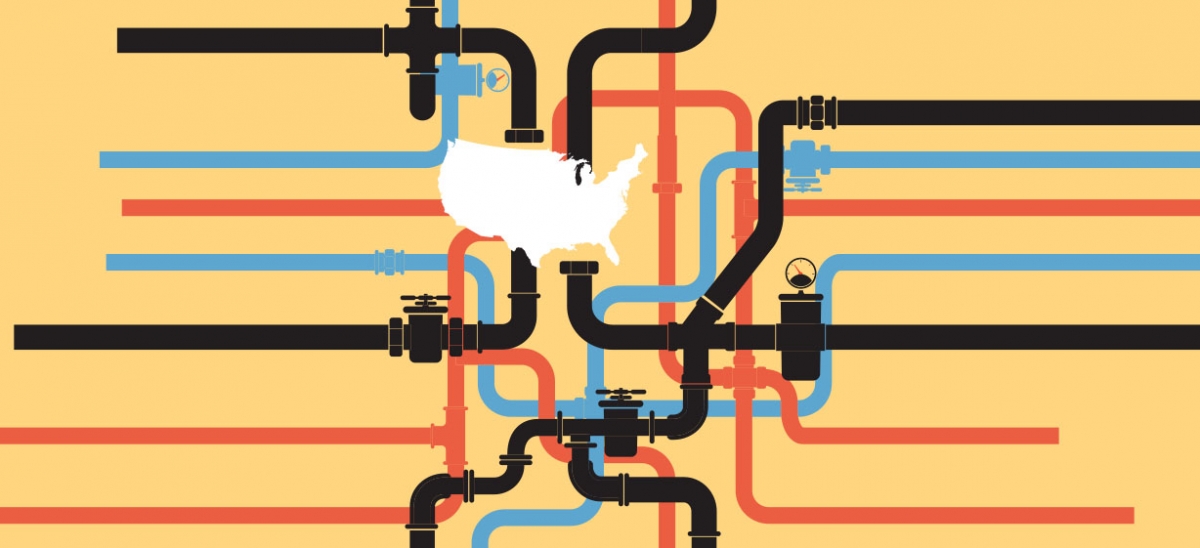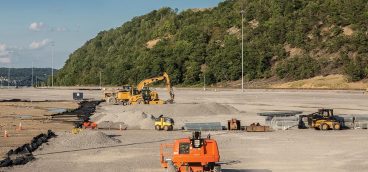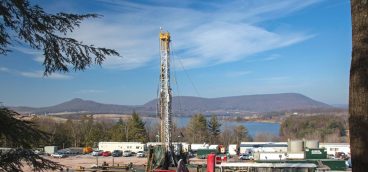
As the Shale-driven production of natural gas has expanded in recent years, so too has the demand from much of the industry to unleash that resource on the world market. And that chorus of voices calling for the United States to use gas from fields like the Marcellus to tap into the world market has only grown louder as gas prices rise in Asia and unrest boils up in the gas-dependent states of the former Soviet Union.
And yet, there are increasing voices who warn that exporting natural gas may not turn out to be as lucrative as supporters suggest and could result in higher gas prices for consumers here, and perhaps even choking off the manufacturing renaissance in the U.S. that low gas prices have helped spark.
The U.S. already exports a small percentage of its natural gas primarily through pipelines to Canada and Mexico, which have free trade agreements with the U.S.
But the plans afoot are a different order of magnitude. If all of the proposed export facilities now pending were approved, the U.S. could export up to 36 billion cubic feet of gas a day, more than twice what we consume daily here. And the projects are aimed at cashing in on a much more lucrative target: markets in Europe where natural gas prices are often twice as high as in the U.S., and parts of fast-growing Asia where consumers pay up to three times as much as we do.
It’s no wonder then that, since 2011, 31 operators across the country have applied to the federal Department of Energy for permission to build export plants that would cool natural gas to minus 259 Fahrenheit, pump it aboard tankers and ship it to those higher-priced markets in Asia and Europe. So far, six—including the controversial $3.8 billion Cove Point facility in Maryland, which would accept gas from the Marcellus—have received conditional approval, despite a steady drumbeat of opposition from environmental groups and some segments of the manufacturing industry. The first of those—Cheniere Energy’s Sabine Pass Liquefaction terminal in Louisiana—isn’t expected to go online until sometime next year.
The growing chorus in the gas industry for export grew louder still when the world’s largest natural gas exporter, Russia, used the resource to help foment unrest in Ukraine. Yet despite that, the drive to make the U.S., and Pennsylvania, in particular, a player in the world market has been slow. Receiving federal approval is an expensive, arduous and time-consuming process. In addition to submitting to a multimillion-dollar review by the Federal Energy Regulatory Commission addressing logistical and environmental concerns, applicants must also persuade the Department of Energy that the plan is in the national interest.
And, increasingly, defining what actually is in the national interest is becoming more difficult. To the industry, vastly expanding our exports is a no-brainer. It means significant profits, it means jobs for those in the export business, and it offers a chance to help narrow the trade deficit. To some in the environmental community who oppose the further development of fossil fuels, the issue also is a no-brainer. As Jamie Henn, a spokesman for 350.Org, a grassroots climate action organization, put it in an interview with USA Today in April, “these are exactly the projects we should not build if we’re serious about climate change.”
But even among some who support the development of natural gas, and shale gas in particular, there are critics who warn that the rush to export liquid natural gas (LNG) is likely to be a bad deal for both American businesses and consumers. Expanded exports, they warn, are likely to mean that the price of natural gas in the U.S., which until now has been shielded from the price pressures of the world market because it was largely landlocked, will soon be a global commodity. That would likely cause the price here to rise, perhaps by as little as 25 cents per thousand cubic feet, perhaps by a dollar or more.
It remains an open question, however, whether it would rise enough to erase the comparative advantage natural gas has enjoyed in recent years over coal. That advantage has led to a noticeable shift from coal to natural gas as a fuel for power generation and has been credited with edging the U.S. closer to the Obama administration’s goal of reducing carbon pollution by 30 percent over the coming decades.
Frank A. Wolak, an economics professor who has studied world energy prices as director of Stanford University’s Program on Energy and Sustainable Development, contends that even with the tighter regulations announced earlier this year on emissions from power plants, coal is expected to remain a vital player for the foreseeable future.
“Coal still supplies 40 percent of the U.S. electricity production,” Wolak told Pittsburgh Quarterly. “I don’t think that’s likely to change too much unless the U.S. decides to set a price on carbon. Coal is just too cheap a source of BTUs not to consume.”
There is slightly less debate about whether those anticipated export-related price increases would be passed on to consumers here through higher electricity and heating bills and also to industries like manufacturing that use gas as both a fuel and a raw material for chemicals and fertilizers. In fact, in its own 2012 report, which examined a variety of export scenarios, the Department of Energy acknowledged as much, stating that “larger export levels lead to larger domestic price increases, while rapid increases in export levels lead to large initial price increases that moderate somewhat in a few years. Slower increases in export levels lead to more gradual price increases, but eventually produce higher average prices during the decade between 2025 and 2035.” Even those who argue that, on balance, exports would deliver a net economic gain to the nation, such as W. David Montgomery, senior vice president of NERA Economic Consulting and lead author on a supplemental study to the DOE report, concede that the benefits would accrue primarily to the drilling industry and to those directly involved in export or those who are invested in those companies.
“Like other trade measures, LNG exports will cause shifts in industrial output and employment and in sources of income. Overall, both total labor compensation and income from investment are projected to decline, and income to owners of natural gas resources will increase,” Montgomery wrote.
“Different socioeconomic groups depend on different sources of income, though through retirement savings an increasingly large number of workers share in the benefits of higher income to natural resource companies whose shares they own. Nevertheless, impacts will not be positive for all groups in the economy. Households with income solely from wages or government transfers, in particular, might not participate in these benefits.”
But even beyond the immediate impact to consumers, there are likely to be significant impacts on domestic manufacturing and other industries as a result of siphoning off a portion of the supply and boosting its price, says Trent Duffy, spokesman for America’s Energy Advantage (AEA), a group of manufacturers who oppose LNG exports to countries not bound by a free trade agreement with the U.S. As a result of the natural gas boom, “we’ve got a manufacturing renaissance going on, which is a real thing,” Duffy said. “It’s not just made up by the chemical companies. It’s a real thing. And it helps more Americans rather than just (a comparative handful in) the gas producing states.” Reducing supply and driving up the cost of natural gas could significantly reduce that kind of economic activity, he said.
It’s not that the manufacturers are dead-set against the whole idea of LNG exports, says Ken Ditzel, an analyst with Charles River Associates who studied the issue for AEA last year. It’s just that AEA opposes sending a valuable resource to non-free-trade countries without first exacting concessions. “A lot of the major buyers of the gas—and particularly most of Asia—are not under a free trade agreement with the U.S.,” Ditzel said.
“It’s hard to argue that we should be free traders when some of them don’t play by the rules. So why not negotiate alongside of that to say ‘we want a free trade agreement with you so that you’re paying a lower cost for gas, you get lower-cost access to our goods, our companies are more competitive and our companies don’t face barriers.’ That’s really the approach that the U.S. should be taking.”
In effect, he argues, because the industry has been in such a rush to push for LNG exports, the U.S. is in danger of surrendering leverage that could be used to offset some of the more negative economic impacts possibly triggered by linking U.S. gas prices to the global market.
What’s more, said Wolak of Stanford, in our haste to cash in on those high prices in Europe and Asia, we may be overlooking a basic fact of economics: that even as we raise prices over here, the sudden appearance of a steady, reliable, comparatively inexpensive source of gas not just from the United States but from countries that are learning from us how to exploit their own shale reserves, could effectively bring down the prices overseas, making export less profitable than LNG boosters expect.
It’s by no means a sure bet that countries across Europe and Asia have the kinds of recoverable reserves—or the will and wherewithal to develop them—that would alter the economic picture sufficiently to undermine U.S. exports, Montgomery said. “The problem is in Europe. Nobody wants to let it happen, because the government owns the mineral rights; the surface owners don’t. Therefore there is just an intractable problem of getting public agreement because you’ve got a whole lot of people who would not be getting anything out of having wells drilled on their land. In China, I see no agreement among the geologists that they even have the kind of resources that could be exploited. It’s a completely different geology. So you could do it, but it would mean bringing new technology development to do it. And I know Slumberger and Halliburton would be very happy to do that for them.”
But Wolak contends that the possibility that they could develop their resources should not be underestimated. As he wrote in a 2012 policy brief on LNG exports, “A major source of uncertainty facing shale gas developers outside of the United States is how transferrable the experience in the U.S. will be to those other countries and how long it will take to find and develop the best way to deploy the best methods for the local geology. Nevertheless, betting against the ability of U.S. firms working with local partners to address these issues seems unwise because it is a bet against what U.S. firms excel in—developing and commercializing new technologies and products.”
The way Wolak sees it, a far better bet would be to focus on using the gas here first, not just in power generation to limit coal, but also as a transportation fuel, thus reducing oil consumption as well and, in the long run, reducing both costs and emissions.
“A longer-term benefit to the United States from the increased use of gas in the transportation sector also plays into its strengths at developing and deploying new technologies. The United States can be a leader in the design of technologies and the accompanying delivery infrastructure for the widespread utilization of natural gas in the transportation sector,” Wolak wrote. “When other countries decide to make the transition to greater use of natural gas… U.S. firms will be ready with the best technologies and infrastructure designs.”





